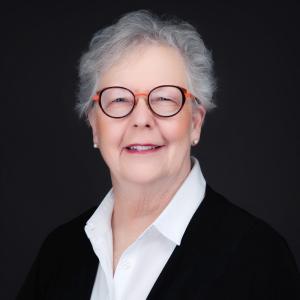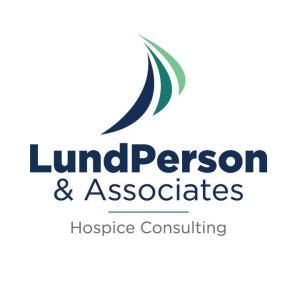Hospice Advocate Judi Lund Person to be Featured on Close Up Radio
ASHBURN, VIRGINIA, UNITED STATES, July 26, 2024 /EINPresswire.com/ -- Americans spend a lot of time avoiding and not thinking about death, but like taxes, death is inevitable. Talking about where you’d like to be, who you’d like to be, and what you’d like to do is essential to entering this life-stage with confidence and grace. As the former Vice President of Regulatory and Compliance at the National Hospice and Palliative Care Organization (NHPCO) and a longtime advocate for hospice services under Medicare, Judi Lund Person has been working hard for more than 40 years to protect the definition of hospice care and to provide resources and guides for hospice providers to meet the Medicare requirements and provide high quality hospice care.
“I want patients and families to understand more about what hospice is and what it isn’t, ” explains Ms. Person. “For example, in order to qualify for hospice, a patient must have a diagnosis of six months or less if the disease runs its normal course. The patient’s attending physician and the hospice team determine eligibility for hospice services. If the patient lives longer than six months, the hospice will continue to provide care. The hospice team will continue to assess for continued eligibility."
Many people think that hospice is a place. Other people think that hospice means that you will be required to die at home. The reality is that hospice is a service that provides care wherever the patient is. "The hospice team will come to your home, to a hospital, to a nursing home or assisted living facility, or any other place the patient calls home. Some hospices also have hospice inpatient facilities or hospice beds in a hospital, when patients have symptoms that need to be managed and cannot be managed at home," shares Ms. Person.
Hospice care is provided by an interdisciplinary team, including nurses, physicians, social workers, chaplains, aides and other people who might be needed, like music therapy and massage. The team works together to develop a plan just for the patient and their family. The patient and the patient’s chosen family all receive care from the hospice team—and support for physical symptoms; psychosocial and spiritual concerns for both the patient and their family. After the patient’s death, bereavement support is available to the family for 13 months to help with the adjustments to the loss of their loved one.
While states are able to license hospice agencies, receiving Medicare reimbursement for services required federal regulations. Ms. Person explains, “As hospice services were added to the Medicare law in 1982, federal regulations were defined to approve hospice providers to receive Medicare dollars,” explains Ms. Person. “These regulations come down to developing a care plan for each patient, working with a team of nurses, doctors, social workers, chaplains, aides, and volunteers to manage symptoms. The hospice must also provide medical supplies and equipment, and medications for pain and symptom management. The team must have the proper licensing and training, and volunteers must be a part of every hospice’s services" explains Ms. Person.
Her passion for supporting patients and families during and after death began as a child. “When I was 12, my dad had a heart attack at night and passed when he was only 42. With two younger sisters, ages eight and ten, I was stunned that no one seemed to know what to do with us concerning our grief as children. We were left to try and figure it out on our own. I always thought that wasn’t quite right. Deep down, that experience was a driver for my career. I always knew families deserved more support during the grieving process,” shares Ms. Person.
Having conversations about end of life wishes before a crisis is important for families. "Write them down, choose someone you trust who can make decisions on your behalf if you cannot," explains Ms. Person. “We can all start by talking with family members about what they want and what needs to happen to fulfill those wishes. One guide to family advance care planning discussions is called ‘Conversations Before the Crisis.' Another resource is 'Five Wishes,' a template which guides everyone to writing down end of life wishes. CaringInfo.org is also a great website that helps consumers with information on serious illness and advance care planning."
Ms. Person doesn’t just have regulatory experience, she has personal experience. “My very dear friend, Bill, was a neighbor who lived two doors down from us. We were always close —I would tease him that he was like my second dad. He went into hospice a day before Thanksgiving. Another neighbor, my husband, and I had those difficult conversations with Bill. When I asked Bill, ‘What do you want to do with the time you have?’ he told me that he wanted to eat out every night. So, we made sure that he was able to go out to dinner every night, until he couldn’t. And then we brought the restaurant food to him. We had such fun going out to dinner with Bill; it gave us a great sense of meaning to help him spend his last days doing what he wanted,” shares Ms. Person. “The time we spent with Bill was priceless.”
Since leaving NHPCO, Ms. Person founded LundPerson & Associates Hospice Consulting for hospice providers looking for resources and expert guidance. For more information on Ms. Person and her firm, please visit https://hospiceconsultant.com/.
Close Up Radio will feature Judi Lund Person in a two-part interview with Jim Masters on Monday, July 29th at 3pm EST and Doug Llewelyn on Wednesday, August 7th at 3pm EST
Listen to the show on BlogTalkRadio1
If you have any questions for our guest, please call (347) 996-3389
For more information about Judi Lund Person, please visit https://hospiceconsultant.com/
Lou Ceparano
Close Up Television & Radio
+1 631-850-3314
email us here
Visit us on social media:
Facebook
1 https://www.blogtalkradio.com/closeupradio/2024/07/29/part-1-close-up-radio-spotlights-hospice-advocate-judi-lund-person


